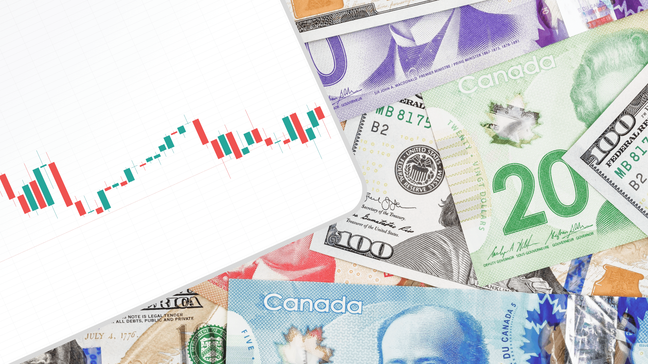The pre-NFP inaction dominates early Friday even as the US traders return from the holiday and political stakes are high in Washington. That said, the UK’s Parliamentary Elections also fill the newswires with the Labour Party’s landslide victory whereas the geopolitical tensions about China, Russia, and the Middle East test the optimism. Even so, recently increasing odds for the Fed’s rate cuts, backed by downbeat data, exert downside pressure on the Greenback and allow other currencies and commodities to edge higher.
With this, the US Dollar Index (DXY), a gauge of the US Dollar versus the major six currencies, brace for the heaviest weekly loss in seven. The same joins the hopes of political stability in the UK to allow the GBPUSD to brace for the biggest weekly jump since mid-May while the EURUSD eyes the second consecutive weekly gain despite mixed Eurozone data and unclear statements from the European Central Bank (ECB) officials.
USDJPY extended the previous day’s retreat from the highest level since 1986 amid the Japanese officials’ verbal intervention whereas AUDUSD and NZDUSD rose for four days in a row despite mixed headlines from home and about their major customer China.
USDCAD remains pressured at the lowest level in a month, bracing for a four-week downtrend, as Oil prices stay firmer on a weekly basis while the US Dollar softens.
Crude Oil snaps a two-day winning streak but stays positive on a weekly basis amid hopes of higher energy demand during this summer in the West and fears of witnessing further supply damages due to the Middle East woes and the OPEC+ output cuts.
Gold ignores the previous day’s Doji candlestick while posting mild gains at a two-week high, preparing for the biggest weekly jump in four, ahead of the key employment data from the US and Canada.
Meanwhile, BTCUSD and ETHUSD fail to cheer the US Dollar’s weakness as technical breakdown joins the German government’s Bitcoin transfers and the US SEC’s delay in the spot ETH ETF launch.
Following are the latest moves of the key assets:
- WTI Crude oil pares weekly gains by posting mild losses around $83.60 by the press time.
- Gold rises to a two-week high of $2,366 at the latest, bracing for a two-week uptrend.
- The USD Index drops to the lowest level in three weeks, down for the seventh consecutive day to 105.00 as we write.
- Asia-Pacific shares edged lower but equities in Britain and Europe posted mild gains during the initial trading hour.
- BTCUSD and ETHUSD brace for the biggest weekly fall since November 2022 while declining to $54,300 and $2,870 respectively.
US Dollar bears are in command ahead of NFP…
Even if the US markets were closed due to Independence Day, the US Dollar couldn’t avoid being on the road to the biggest weekly fall in seven while falling in the last six days, mildly offered near 105.00 by the press time. In doing so, the DXY dropped to the lowest level since mid-June amid fears of slowing economic growth pushing the Federal Reserve (Fed) toward rethinking its “one rate cut in 2024” bias. It should be noted that the recently weaker activity and inflation clues join the fears about US President Joe Biden’s exit from the US General Elections to exert downside pressure on the US Dollar and the Treasury bond yields.
While the dovish Fed concerns are on the rise, the ECB officials push back chatters about more rate cuts despite recently downbeat data. That said, the German Factory Orders and Industrial Production were the latest blow to the ECB’s effort to tame the doves. Apart from the downbeat EU data, the political pessimism in France also challenges the EURUSD bulls even if the major currency pair braces for a heavy weekly upside.
On the other hand, the market’s expectations of witnessing sound political stand in the UK due to the Labour Party’s victory seem to have offered recent strength to the GBPUSD. However, chatters that the new leaders might not like higher rates amid downbeat data and will push the Bank of England (BoE) toward rate cuts seem to challenge the bulls.
USDJPY bears the burden of Japanese policymakers’ comments criticizing weaker Yen and citing chances for the Bank of Japan’s (BoJ) rate hike. Among them, Japan Finance Minister Sunichi Suzuki was the latest one to hint at the looming market intervention. It should be observed that the downbeat Japan Household Spending and mixed inflation data challenge the bias and put a floor under the Yen pair.
Elsewhere, AUDUSD and NZDUSD cheer the fresh clues suggesting a delay in the rate cuts from the respective central banks, as well as hopes of China’s more stimulus, amid the softer US Dollar. However, fears about the Dragon Nation’s economic soundness prod the Aussie and Kiwi buyers.
Above all, USDCAD marks a stellar fall while benefiting from the softer US Dollar and strong prices of Canada’s main export item Crude Oil. Additionally, the previous week’s upbeat Canada inflation also weighed on the Loonie pair as Bank of Canada (BoC) Governor Tiff Macklem showed a data-driven approach after cutting rates previously. That said, Crude Oil prints mild losses at a 10-week high while snapping a two-day winning streak. Even so, the Black Gold remains on the way to posting a four-week uptrend amid hopes of better summer demand and supply crunch.
Gold price remains firmer amid downbeat US Dollar and receding hawkish concerns about the US Federal Reserve (Fed). That said, the yellow metal braces for the consecutive second weekly gain by the press time. It’s worth noting that the top-tier US Treasury bond yields eye the first weekly loss in three and should have offered additional strength to the Gold price, especially amid the downbeat US Dollar and political anxiety.
- Strong buy: USDCAD, USDJPY, US Dollar, Silver
- Strong sell: AUDUSD, NZDUSD, GBPUSD
- Buy: BTCUSD, ETHUSD, Nasdaq, Gold, DJI30, USDCNH
- Sell: DAX, FTSE 100, EURUSD, Crude Oil
A busy day ahead…
Friday will be a busy day for the market players after a dull session on Thursday, mainly because of the scheduled releases of the US and Canadian employment data, as well as the Eurozone Retail Sales. Also important to watch will be the US traders’ reaction to the latest political jitters in the US and the UK.
While the likely softness in the US jobs report and upbeat Eurozone Retail Sales appear to favour the EURUSD bulls, any surprises won’t be taken lightly and can trigger the much-awaited pullback in the prices as the ECB policymakers seem less convincing. Also, the Canadian employment data may bolster the case for the BoC’s no further rate cuts by surprising the markets with strong outcomes, especially when backed by the upbeat inflation clues. The same could push the USDCAD pair toward breaking the 200-SMA support of 1.3595.
May the trading luck be with you!




